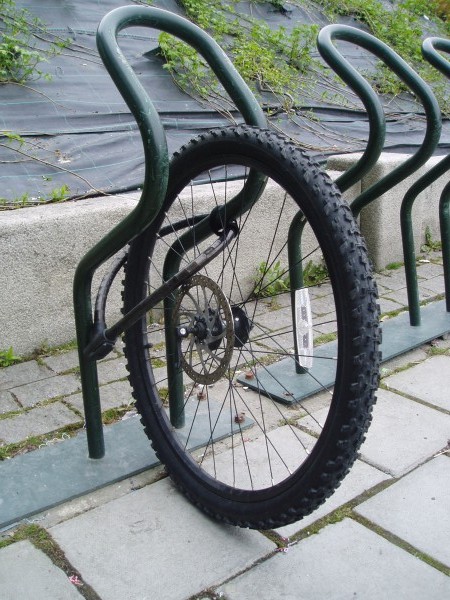
In Norway, with a population of 4 million people and 2 million bicycles, 60.000 bicycles disappear each year, never to be seen by their owners again. These owners shed tears, rail against the sky, and then go out and buy a crummy bike to get around on.
The victims of bicycle theft tend to be people who use their bicycles: students, commuters, hobbyists, hard-core riders, and children. Most bicycle crime occurs in cities where there are colleges and universities.
Most bicycles are stolen from places owners assume are safe. Experienced thieves can take even locked bikes in about 10-20 seconds. Bolt cutters will cut most chains and cables, and U-style locks are broken by inserting scissors-style car jack inside the U and cranking.
Within the drug trade, stolen bicycles are so common they can almost be used as currency. On the streets, the value of a stolen bicycle is approximately 5-10% of the bicycle’s original retail value, with an inverse relationship between value and percentage worth on the street. According to numerous interviews with industry insiders, the percentage goes up as the value goes down; a bicycle that sells for NOK 4000 new will sell for NOK 400 on the street when stolen, and a new NOK 50.000 chromealloy machine will sell for as low as NOK 2.500.
About 10% of the stolen bicycles are exported for Norway to Russia and Eastern Europe.
The bottom line is: people would spend more on bikes and use them more frequently if they weren’t constantly worried they were going to get ripped off.
The insurance industry wanted to reduce their losses and startet a national bicycle registry to identify stolen bicycles. The bicycle registry is owned by the Norwegian Financial Services Association (FNH), but driven by the Norwegian Falck company. In 2005 over 500.000 bicyles are registered.
Back to sykkeltyveri.no